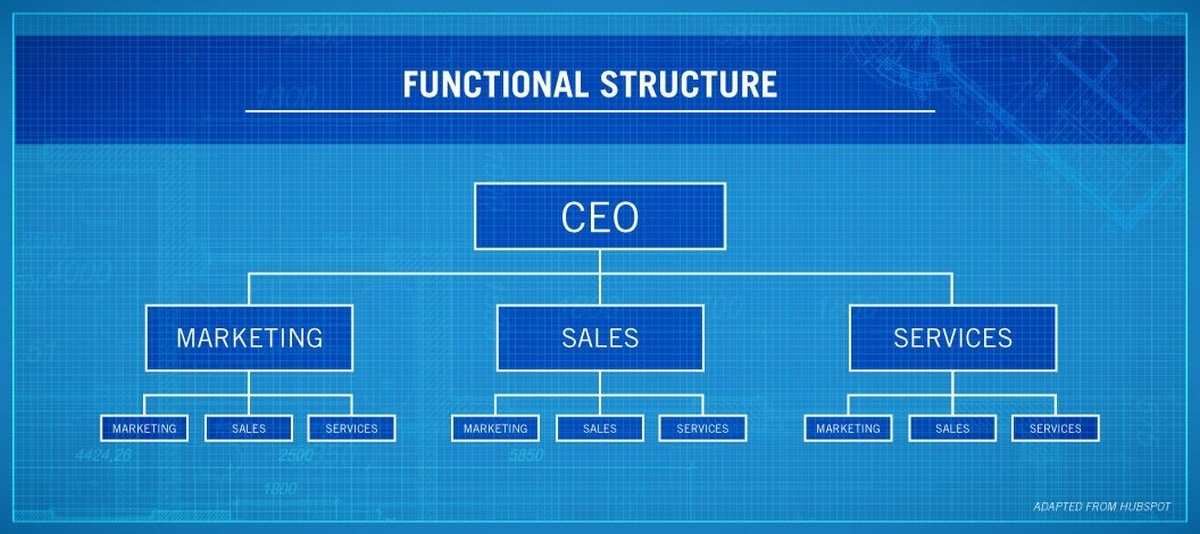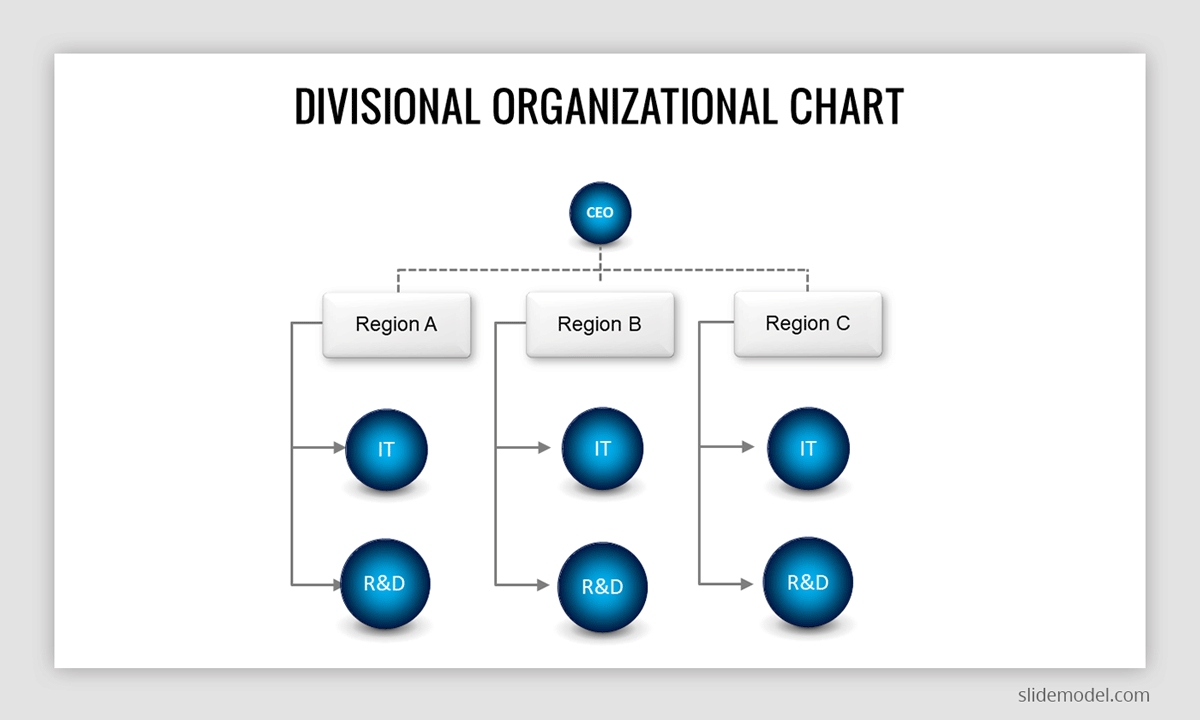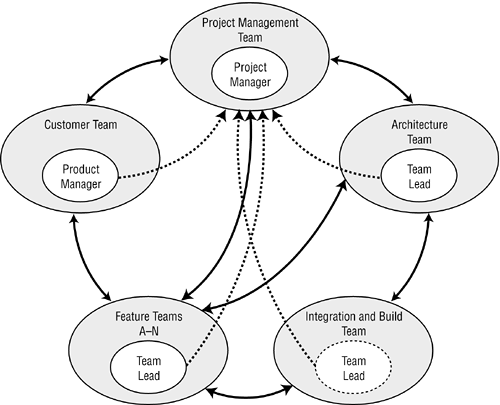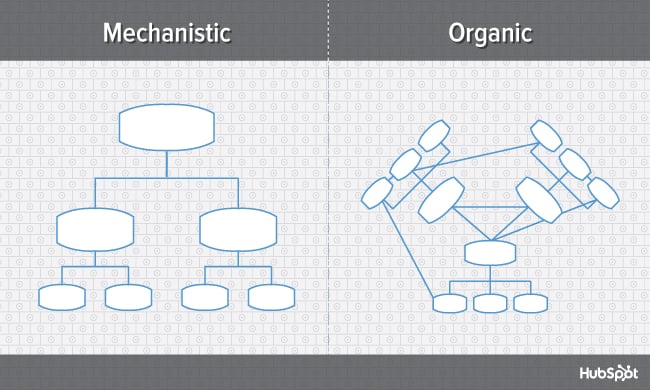
3 Team Design/Formulation
This section covers several variations of team structures and organizational structures that you may encounter in your career at Ross and in the corporate world.
3.1 Hierarchical

A hierarchical team/org structure is the most common in the corporate world. It is the typical pyramid-shaped chain-of-command where everyone has a boss and orders flow from the top down. Hierarchies can range from strict to relaxed.
Pros:
-Clearly establishes and maintains authority
-Employees know exactly who to talk to about their projects
-Creates a clear path of progression through the ranks
Cons:
-Big hierarchical organizations can have lots of bureaucracy
-Employees may have perverse incentives to act in their own individual interest rather than the interest of the team/company as a whole
-Entry-level employees may lack a feeling of ownership or importance
3.2 Functional

A functional team/org structure is a variation of the hierarchical structure since the format of authority remains the same. However, the functional structure organizes members’ positions based on their own individual skills. These different skill groups are managed independently from one another. Pros:
-People can specialize in their own areas of expertise
-Gives team members more ownership over their outcomes
-This structure can be used in large or small groups
Cons:
-Can lessen communication within the organization as a whole
-Departments may become estranged or competitive with each other
-Potential synergies between departments may never be realized
3.3 Divisional

A divisional team/org structure gives different divisions of people their own areas of resources, responsibility, and leadership. Divisions can be defined by geographic location, task responsibilities, or any other useful criteria.
Pros:
-Flexibility for large organizations/teams
-Allows for adaptability to shock events
-Employees get more independence and ownership of their work
Cons:
-Can cause inefficient use of resources
-Divisions can become competitive with each other
-Communication between division may be obstructed
3.4 Horizontal

A horizontal team/org structure is one where everyone is on the same level of authority. Sometimes, there is one person who is above everyone else, and sometimes everyone is on the same level.
Pros:
-Employees feel a greater sense of ownership
-Creates opportunities for open communication between all employees
-Can lead to improved coordination between functional areas
Cons:
-Final authority can become confusing in crucial decisions
-Is not scalable to large teams/organizations
-Can lead to employees lacking specific workflows or direction
3.5 Team-Based

A team-based organizational structure is one meant to mimic the traditional hierarchy but divide it into sections based on project teams. The idea is to minimize bureaucracy while still reaping the benefits of a hierarchical structure.
Pros:
-Improves employee relationships and therefore output
-Lowers management costs
-Works well with scrum teams
Cons:
-Career progression may be unclear for employees
-Final authority can become confusing
-Can be challenging to scale from small to large
3.6 Network

A network team structure describes a culture of open communication and relationship-focused work. A network organizational structure describes a way of thinking about a company as a “network” that connects resources, employees, suppliers, and customers.
Pros:
-Provides flexibility and adaptability
-Gives employees an understanding of business processes and organization
-Encourages employees to collaborate and learn from each other
Cons:
-Can become too complex to deal with
-Final authority can become confusing
-Difficult to maintain over a long period of time
3.7 Organic

An organic team/org structure is one where leadership is dynamic, meaning that authority can change hands. This is usually done based on who is the subject-matter expert for the current task. This is the opposite of the strict hierarchy.
Pros:
-Everyone gets a chance to lead
-Improves employee relationships
-Provides flexibility and adaptability
Cons:
-Final authority can become unclear or confusing
-Career progression paths are unclear
-Someone may be a subject-matter expert but still be a terrible manager
3.8 Matrix
A matrix organizational structure is one where people engage in cross-functional activities within the organization. The matrix organizational chart is designed like a grid.
Pros:
-Encourages cross-functional communication
-Allows employees to showcase different skill sets
-Allows managers to select people from different departments to form a team
Cons:
-Constant change can cause confusion or inefficiency
-Authority between project managers and department heads may get confusion
-Bad managers can cause big problems in a matrix team/organization